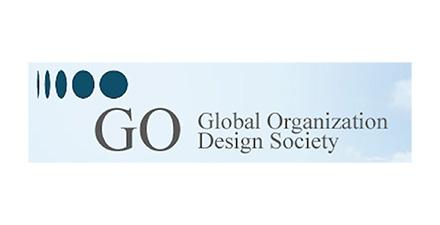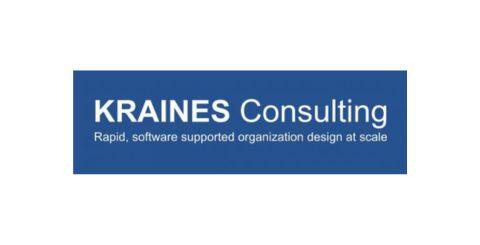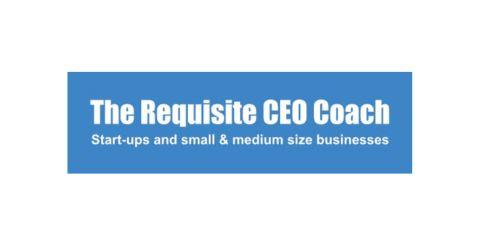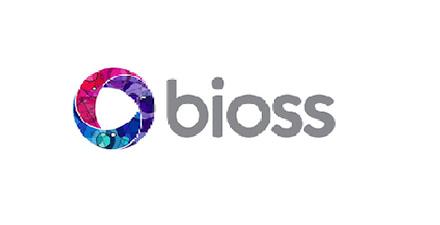
Theoretical Insights Provided by RO Concepts in Understanding Entrepreneurial Work
Small Entrepreneurial Organization: Long-Term Growth and Sustainability You're about to hear a presentation titled "Small Entrepreneurial Organization: Long-Term Growth and Sustainability Concepts Ap...
Transcript of the presentation video
NOTE: This transcript of the video was created by AI to enable Google's crawlers to search the video content. It may be expected to be only 96% accurate.
Small Entrepreneurial Organization: Long-Term Growth and Sustainability
You're about to hear a presentation titled "Small Entrepreneurial Organization: Long-Term Growth and Sustainability Concepts Applied as Consulting Tools to Facilitate Entrepreneurs' Tasks." This presentation focuses on developing tools and concepts to help entrepreneurs achieve sustainability and growth in their small entrepreneurial organizations.
These tools and concepts are the result of over 30 years of experience working with entrepreneurial organizations in the consulting field, incorporating and applying the Requisite Organization and other theoretical developments from the likes of Schumpeter, Drucker, Luca Pacioli, and others. We also acknowledge the direct contributions of Dr. Jaques and Catherine Cason, and other colleagues such as Dr. Aldo Solemsesen and Dr. Emmerich Solomassi, among others.
Before we begin, I'd like to extend special thanks to Ken Shepard, who encouraged me to prepare and participate in this material, and Don Fowke and Robin Rutili, who will coordinate this session.
The presentation is structured along four main axes:
- Elaboration of Theoretical Concepts Regarding SEO: This includes the quadruple role of the entrepreneur: founder, stockholder, member of the association executive board, and chief executive of the organization.
- Requisite Organization (RO) Concepts Applied to the SEO and the Entrepreneur.
- Cases and Testimonies of Entrepreneurs in Argentina (1986-2005).
- The Consultant's Role in the Small Entrepreneurial Organization.
Since the first two issues are closely related, we'll discuss them simultaneously: the SEO concepts and the application of RO concepts.
The Two Spaces Within Organizations
Recalling one of the first concepts proposed by the Requisite Organization, we find two clearly defined spaces within our organizations. The superior space corresponds to the association, and the lower space is designated for salaried work.
Dr. Jaques's theories allow us to systematize an organization's work, starting at the top with the CEO and extending down to the company's lowest-ranking employees. This creates an organization of pairs of bosses and subordinates who can execute the daily workload and achieve the organization's objectives.
This organization, led by the CEO, is created by the so-called members of an association. These are the individuals who have decided to undertake what, in economic terms, is known as risk investment. The members of this association form the governing body of the organization. This governing body, in turn, is responsible for ensuring that all daily work is completed. Typically, this governing body is called the board of directors and is made up of the members of the association, referred to economically as shareholders.
Shareholders provide the initial capital to undertake the tasks that the executive organization, led by the CEO, must then carry out. These shareholders must choose the form of governing body they want for the association, and the association then designates the CEO, who will be a salaried individual.
Three Types of Economic Work
Let's examine the three existing types of economic work as enunciated by Jaques:
- Type One (T1): Shareholder Work. This is the work done by the shareholders.
- Type Two (T2): Governing Body Work. This is the work done by shareholders acting as members of the association in its governing body.
- Type Three (T3): Wage-Earning Work. This category covers all areas where wage earning occurs, from the organization's highest authority to the lowest rung of the career ladder.
These are the three kinds of work understood in economic terms.
Entrepreneurial Work According to Jaques
Another interesting point is understanding exactly what Dr. Jaques called entrepreneurial work. For Dr. Jaques, entrepreneurial work is, above all:
- The work done by the shareholders who have decided to risk their capital.
- The work done by the members of the association's governing body.
Both T1 and T2 are what we will call entrepreneurial work, while T3 refers to the work done by the structure of subordinate managers, without exception.
The Independent Worker
Now, let's consider the idea that any independent worker (someone not working as an employee) also performs these three types of work in their ongoing activity. That is, they risk a certain amount of capital, they govern themselves, and they do wage-earning work. However, this independent worker, while performing these three kinds of jobs, does not lead an organization. It is precisely this organization that we will be discussing today.
The Essence of Small Business
Let's look at the entrepreneurial work that gives rise to these organizations. Within this entrepreneurial work, which is the essence of small business, we find an entrepreneur or businessman who has decided to risk a certain amount of capital and to do the kind of work we've called T1 (the work done by the shareholders). Simultaneously, this individual will also do T2 work, which is the domain of the organization's governing body. On top of all this, this entrepreneur will also do the work reserved for the organization's top executive, meaning T3 type work.
Initially, at the start of their undertaking, any entrepreneur will intuitively realize they don't have sufficient work to be employed full-time. As a result, they'll start to dedicate their time to other tasks, perhaps in production, service, marketing, or selling the product or service. It's important to note that this entrepreneurial individual has a vocation and takes pleasure in what we call substantive technology.
An Example: The Entrepreneurial Medical Doctor
Let's consider an example. This person was very possibly a salaried MD, a medical doctor within a large organization. As a result of their growing skills, one day they decide to invest and risk some capital, either on their own or perhaps with a partner. They then set up an organization that they themselves will lead. They then work there in the same way they did at the hospital, attending patients. We can consider this their production area.
Let's review their situation. This gentleman spends most of his day working as an MD attending his patients. He dedicates a small part of his time and work to leading his organization, which is made up of a few other MDs and perhaps an administrative assistant. Together with his partner, they'll be part of the organization's governing body and will have decided to invest and risk a certain amount of capital to undertake this enterprise.
The Entrepreneur's Blind Spot
What happens when one observes these organizations versus large organizations? Please allow me to make this distinction: any person working for a salary understands that a governing body exists and that shareholders also exist, whether or not they are on the board of directors.
The amazing thing we've noticed, and which is possibly one of the tools the Requisite Organization uses to assist these businessmen, is that when working with entrepreneurs, everything they see and think about is located at the organization level or below. This means they see themselves as part of a two-tier organization.
I'd like to insist on this point: one of the fundamental tools in consulting when working with entrepreneurs is to help them identify and distinguish between the existence of two additional forms of work:
- The work done as a member of the organization's governing body (i.e., on the board of directors).
- The work done strictly as a shareholder of the organization.
These two types of work, T1 and T2, are often not visualized, thought about, or identified by the founder-businessman. This person, who, as Schumpeter would say, uses his instinct to create an organization and a company where previously there was nothing, only sees the everyday work he does. That is the work that begins at the point of highest accountability and then continues to a lower point where the work must be executed or the service rendered.
So, it becomes quite clear that when the organization first comes into existence, at its birth, the only thing this individual can visualize is the existence of a two-tier organization, which is the focus of our presentation: the small entrepreneurial organization.

Major organizations and consulting firms that provide Requisite Organization-based services




